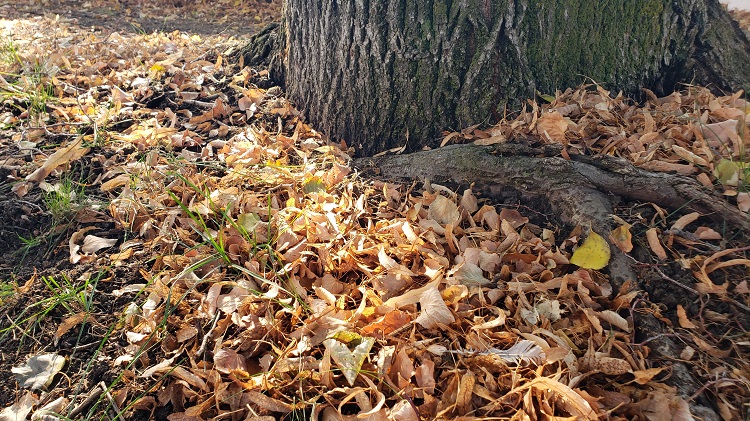


Fall is in the air and with it comes new seasonal tasks, such as raking up leaves and collecting fallen fruit from the summer harvest. Leaves can be a fantastic form of mulch, but it’s not quite as easy as simply letting them sit where they fall. A lot of people think of raking leaves as a chore and a nuisance, but in reality, dead leaves are a fantastic mulch source. Fallen leaves are readily available, free, and renewable making them absolute “garden gold.”
Mulch, by definition, is a suitable material put on top of soil to help maximize its environment. Mulch is also often thought of as a landscaping detail to add beauty to your yard. There are all kinds of mulch, with high-quality mulch available from trusted sources like The Dirt Bag. Mulch can be made up of a variety of things, but leaf mulch is exactly what it sounds like—no added ingredients here. As leaves decompose, it enhances the fertility of the soil and optimizes organic content. Leaves decompose quickly, so you don’t have to wait long for the benefits.
Many avid gardeners spend plenty of time (and money!) amending their soil, and leaf mulch can be a free way to speed up this process. When you use what nature has already given you for soil additives, you’re already a step ahead. Leaf mulch can renew plants, but there is truth to the idea of too much of a good thing. Leaf mulch in a layer no more than one inch thick on targeted soil can moderate soil temperatures as we prep for the winter months. This protects the plants and minimizes your need for additional fertilizing at the moment.
Leaves are also great at keeping weeds in check so you won’t need to spend as much time weeding. Soil erosion can also be reduced with proper use of leaf mulch. However, all of these benefits require more than simply transferring leaves from beneath the trees to your targeted soil. The best way to use leaf mulch is to shred it, usually by allowing the leaves to dry first. Dried leaves can be ran over with a lawnmower for easy shredding. Leaves that are dry tend to break down quicker and are easier to shed, but wet leaves are also beneficial to the soil (albeit tougher to work with).
When working with dry leaves, spread them 3 – 4 inches away from shrubs and trees and 2 – 3 inches away from perennial beds. They can be used as insulation for roses as long as you remove them before spring growth begins. Add leaf litter to veggie beds to instill nutrients to the soil, prioritizing smaller shreds when possible.
Alternatively, you can also use leaves and fallen fruits as compost. Simply place these items in a pile that will occasionally get wet. This pile should be left alone for two years before it becomes fantastic compost for flower beds. Ready for more tips on autumn composting and mulching? Get in touch with The Dirt Bag today!